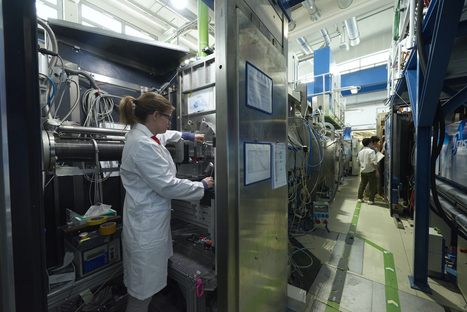Antibiotic resistance is one of the greatest global health challenges of our time. Wastewater treatment plants are a true breeding ground for antibiotic-resistant germs, as this is where pathogens and antibiotic residues come together. The resistant bacterial strains then re-enter the environment via the treated water and can spread further.
Scientists at the University of Naples Federico II have now developed a nanomaterial to combat this problem. Supported by instrument scientist Dr. Judith Houston from Forschungszentrum Jülich (and meanwhile at the European Spallation Neutron Source ESS in Sweden), they have analyzed it at the Heinz Maier-Leibnitz Zentrum. The material is a hybrid of humic acid and titanium dioxide (TiO2). Humic acids (HAs), which occur naturally in humus soils, have useful properties that can counteract water pollution: on the one hand, they have an antibacterial effect, and on the other hand, they can bind small molecules such as antibiotics.
Highlights
• In situ hydrothermal route is a versatile approach to realize multifunctional hybrid nanomaterials for biowaste valorization.
• The combination at molecular scale of HAs and TiO2 improves the.•OH generation even under visible light;
• Hybrid HA-NDL/TiO2 nanomaterials exert a ROS-mediated antibacterial activity.
• Surface and colloidal properties make the hybrid nanomaterials as valid sequestering agents against antibiotics.
• A high and selective activity is shown in sequestering amoxicillin and tetracycline contaminants.
image © Wenzel Schuermann / TU Muenchen
read the study at https://www.sciencedirect.com/science/article/abs/pii/S0013935120314596
read the entire article/press release at the MLZ website at https://mlz-garching.de/englisch/news-und-press/news-articles/nanomaterial-sagt-resistenten-bakterien-den-kampf-an.html



 Your new post is loading...
Your new post is loading...







